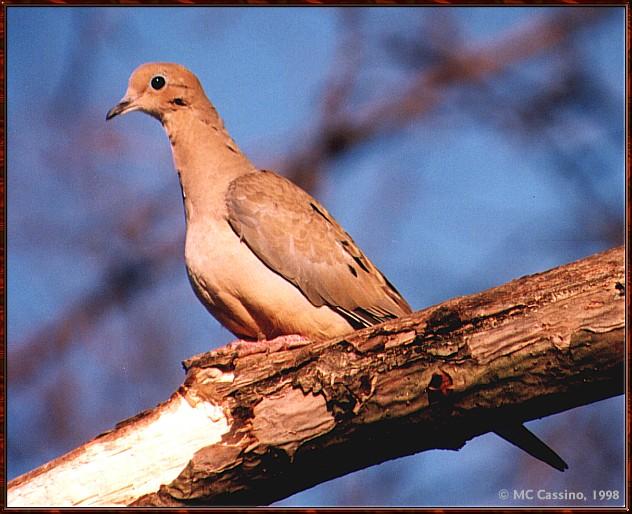|
| Query: bird | Result: 8631st of 32675 | |
Resuming Transmission -- January 1998 images --> Mourning Dove
| Subject: | Resuming Transmission -- January 1998 images --> Mourning Dove
| | Poster: | Mark Cassino (cassino@net-link.net)
| |

| File size : 53292 bytes
File date : 1999:01:05 09:00:00
Resolution: 632x514
Jpeg process : Baseline
Posted Date: Sun, 3 Jan 1999 20:30:49 -0500 |
Resuming Transmission -- January 1998 images --> Mourning Dove
To:
Hi Jinsuk --
Sorry for the break in transmission, but I've been busy
putting up a new web page update. I now have the 50 some
images from the November update to send your way.
Here are images from January, 1998 -- I was a whole 6 months
into photography then, so they aren't the greatest -- but
then some of these are my favorites.
bb01 - bb04: blue jay
bb05 - bb09: cardinal
bb10 - bb11: house sparrow
bb12 - bb13: mourning dove
bb14 -- gold finches
mb01-mb02: fox squirrel
more to follow --
MC
---
Mark Cassino
Kalamazoo, MI
cassino@net-link.net
-
Bird & Garden Images:
http://www.net-link.net/~cassino
---
Comments
========
Mark Cassino kindly sent these images to me.
His website has more bird and insect images mostly
taken at his backyard.
http://www.net-link.net/~cassino
Webmaster |
^o^
Animal Pictures Archive for smart phones
^o^
|
|

